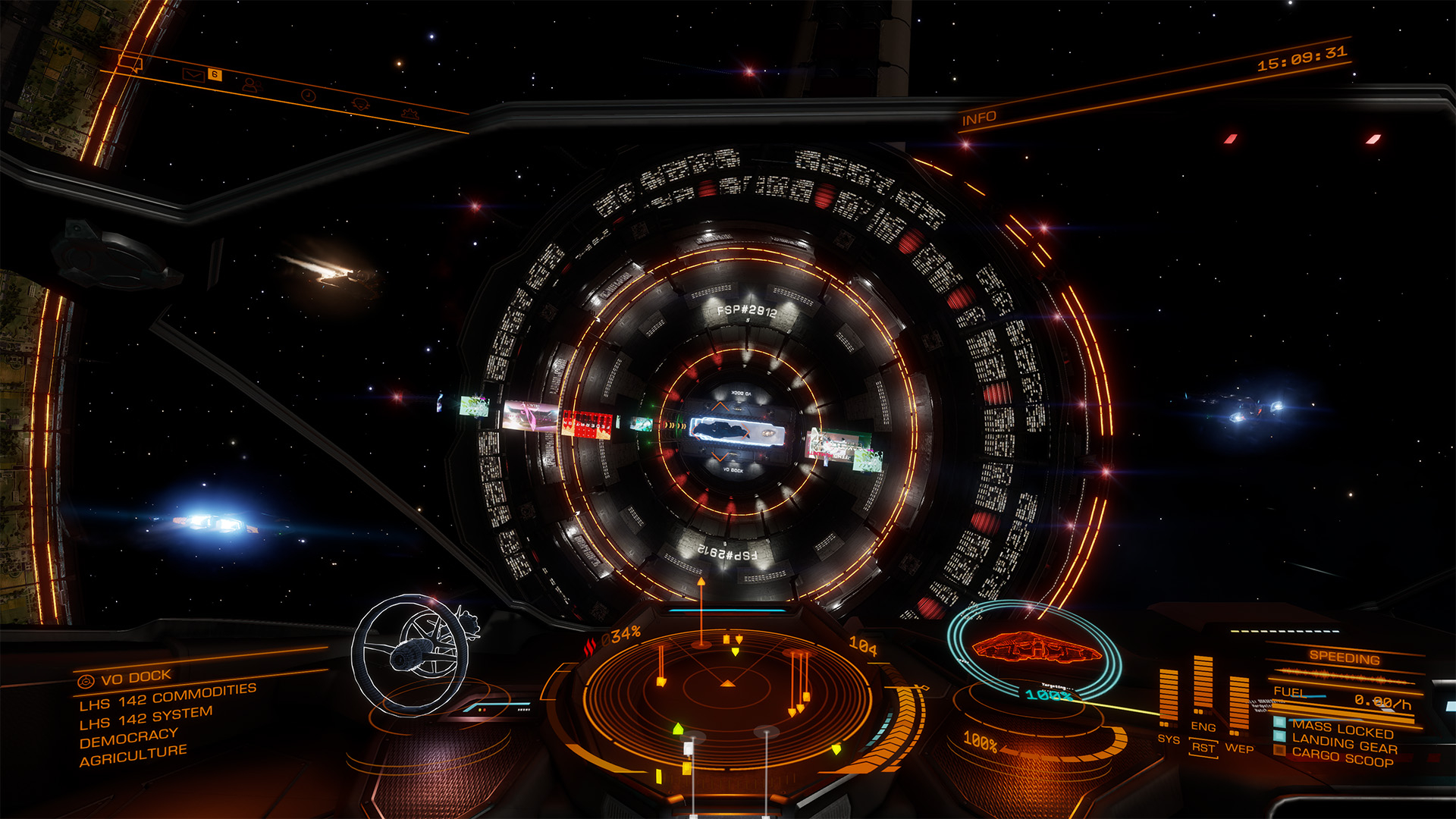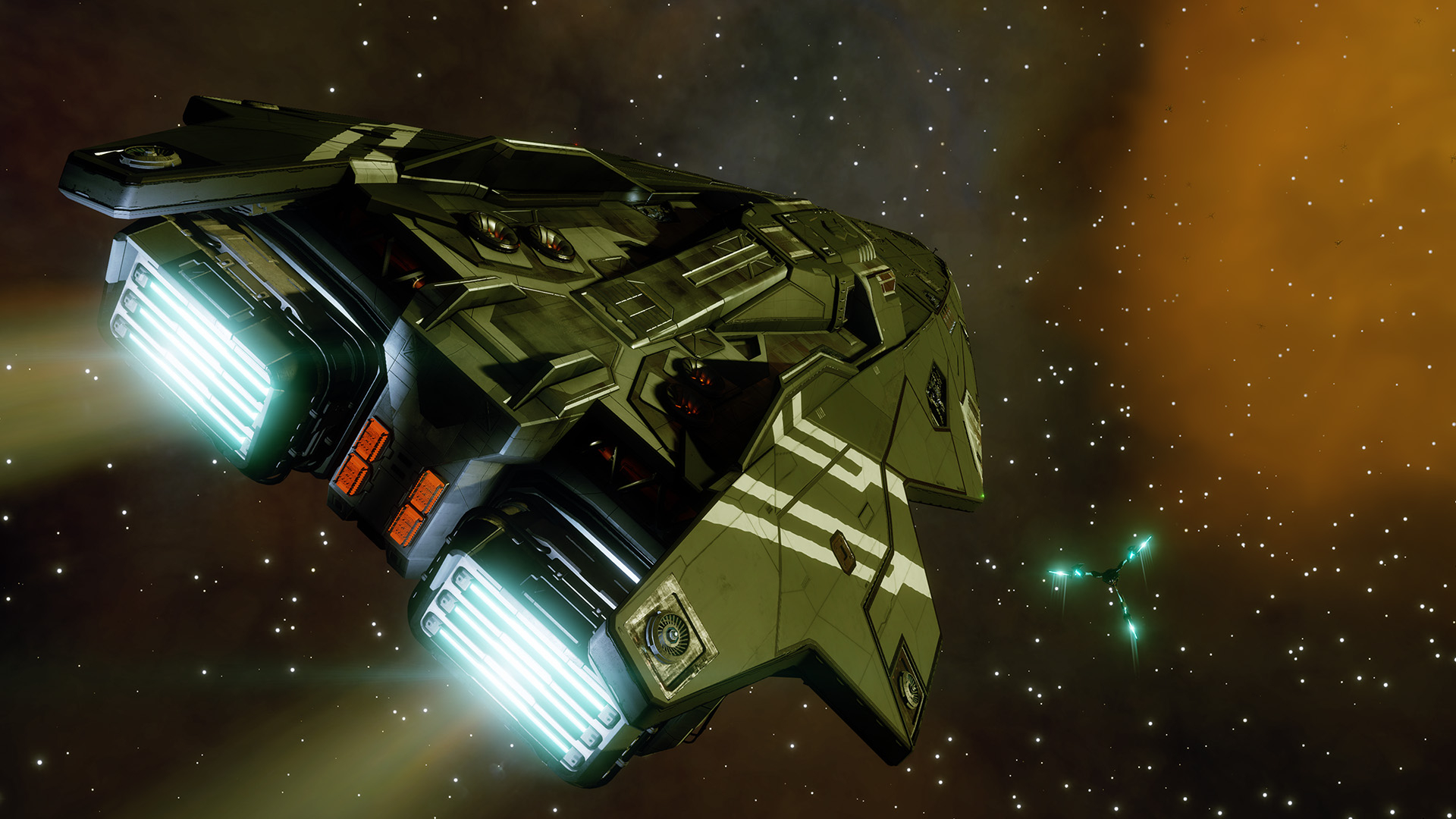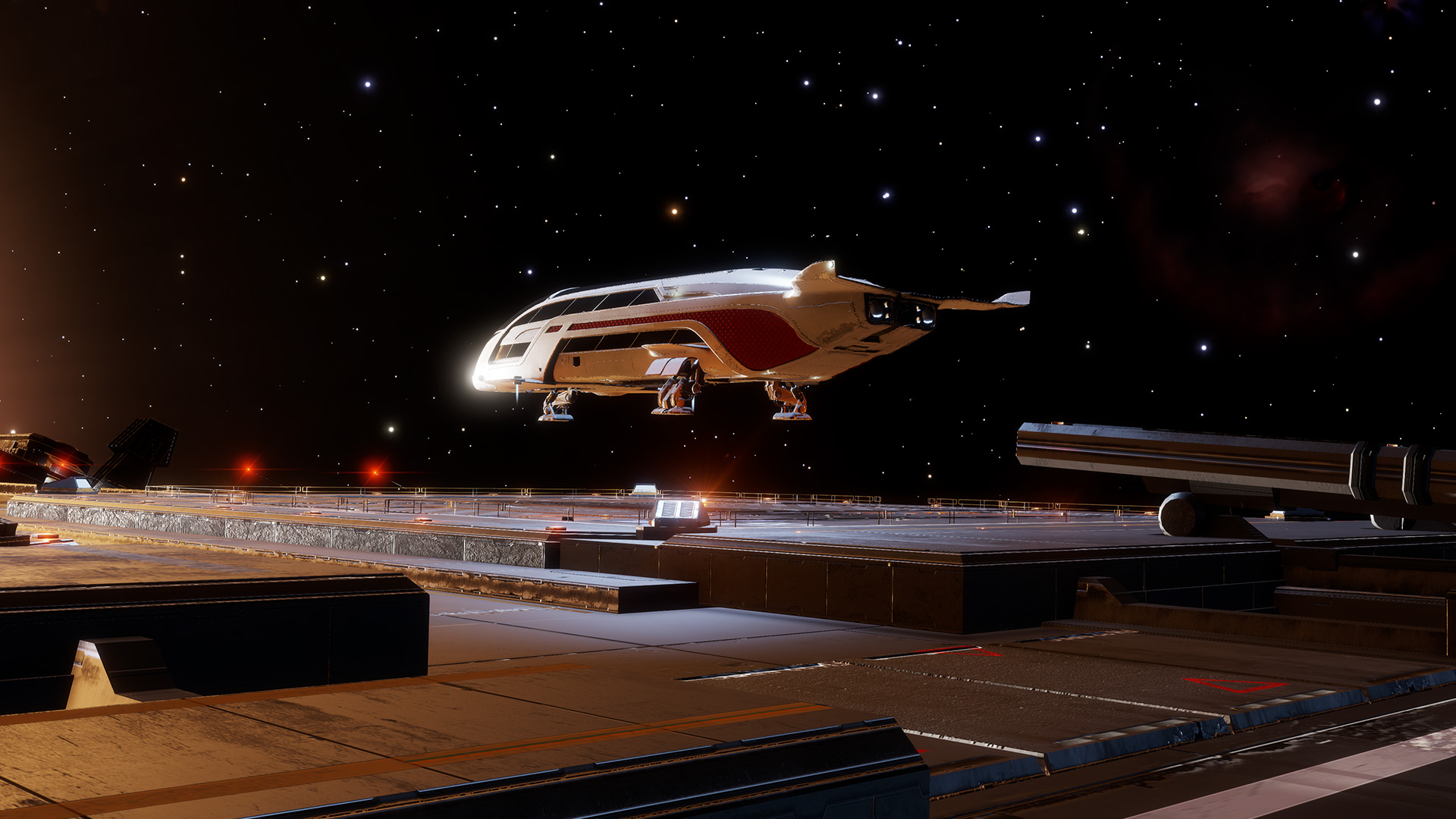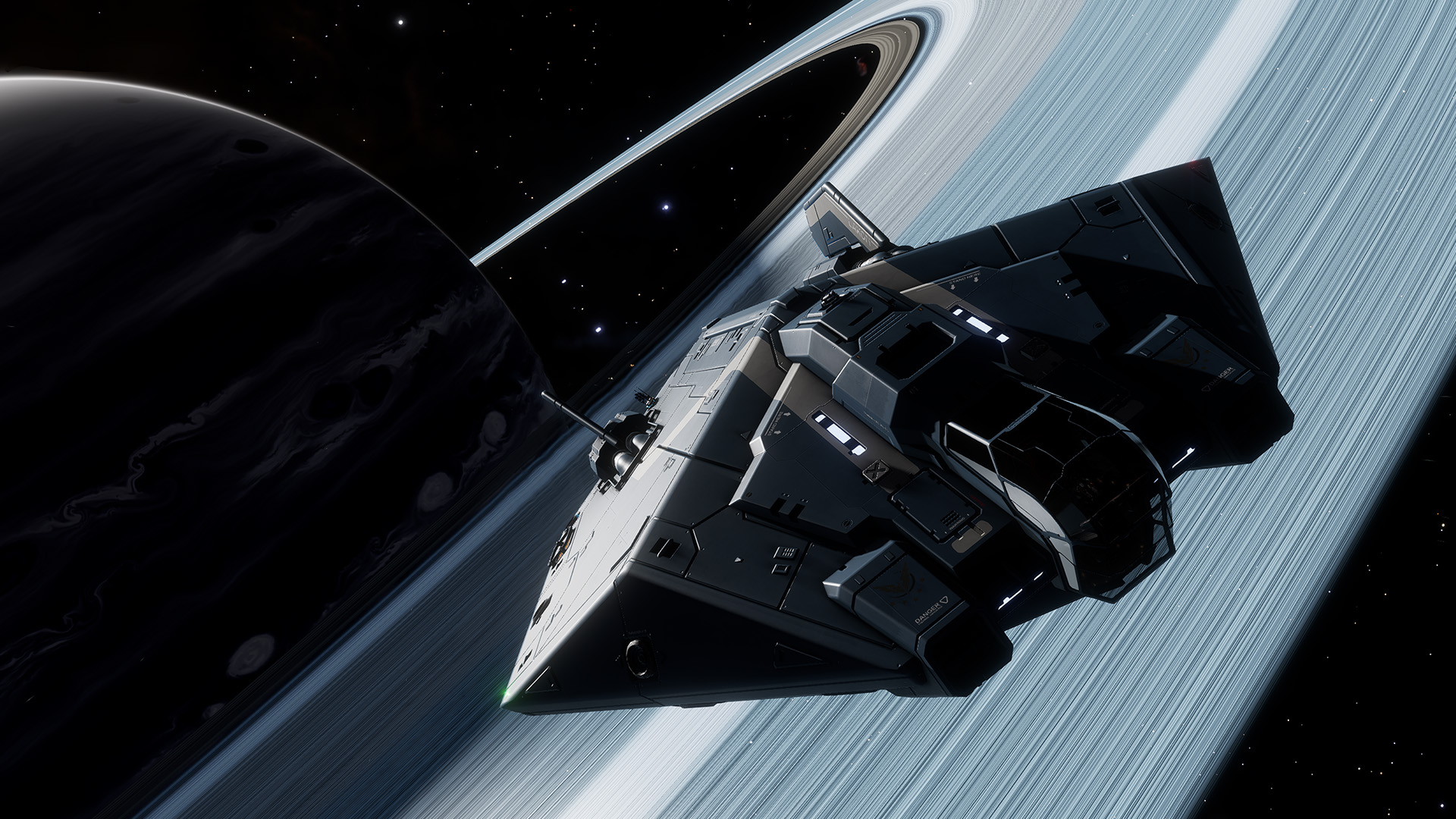I'd hardly call most sci-fi like Star Trek or Mass Effect educational, but it's amazing how much actual science and space knowledge you can pick up from sci-fi entertainment. I've heard of Wolf 359, one of our neighbouring stars, not because of physics classes back at school, but entirely because it's where the Federation fought the Borg in Star Trek: The Next Generation. Still, despite the occasional nugget of real information that sneaks through, it's fair to say that most movies, shows, and video games are better left to inspiring our interest in the stars and planets, rather than teaching us about them … but Frontier Developments is looking to change all that.
The developers of Elite Dangerous invited us down to the Science Museum in London for one of their 'Lates events' to attend a special live, guided tour of our solar system within the game, hosted by two of the senior staff at the Museum: Abbie MacKinnon, Curator of Space Technology, and Laura Joy Pieters, Curator of Mathematical Sciences.
Elite Dangerous is a massively multiplayer space flight simulation game developed by Frontier Developments, and it just celebrated its tenth anniversary late last year. Within the game, you'll find a complete simulation of our Milky Way galaxy — 400 billion star systems, along with every known planet, moon, black hole, and celestial phenomenon that we know about (or rather, knew about ten years ago). And while we know a bit about our wider galaxy, there is nowhere more familiar to us than our solar system.

After getting a little hands-on time with the game myself using a wicked flight stick and control panel set-up that did nothing to improve my terrible piloting skills, I sat down amongst the packed crowd for the tour. The event was MC'd by Arthur Tolmie, Head of Community, PR, and Communications at Frontier, and the ship itself was piloted by Max, a member of the development team.
From there, Abbie and Laura introduced themselves and then started using Max's spaceship as their own personal extraterrestrial Uber, as they requested destinations for him to blast off to. The tour started at Abraham Lincoln Space Station, a fictional space station in Earth's orbit in the game. Elite Dangerous is set over 1,000 years in the future, so humanity has figured out some pesky little physics problems like building megastructures in space, and the potentially impossible issues of faster-than-light travel, too.
From there, we took a whistlestop tour of the solar system, stopping off at the moon, Mars, Jupiter (and its moon Ganymede), and Saturn (and its moon Enceladus). We even got to take a mercifully long-distance peek at a black hole. Along the way, Abbie and Laura shared facts about our destinations and shared stories about everything from our prospects for colonies on Mars to the excellently-named JUICE mission to explore Jupiter's icy moons.
It's an enthralling tour to listen to, even if you're already quite knowledgeable about space, and thankfully, it was not exclusive to those of us lucky enough to be in attendance. You can watch a video version of the tour below, but more excitingly, you can follow along in-game by selecting the flight plan while docked at the Abraham Lincoln Space Station.
Tour the Solar System in Elite Dangerous with Science Museum Curators! - YouTube

We also managed to sneak a few questions into Abbie MacKinnon's busy schedule to find out more about how and why this unique collaboration came together.
"Games like Elite Dangerous allow people to visualize the universe and all that is in it (especially how empty it is)," remarked MacKinnon. "Being able to travel to different planets, moons, and star systems is also something that humans are not likely to ever be able to experience, so realistic games like this are the next best thing. It will hopefully inspire the next generation of engineers, scientists, and space enthusiasts."
It's not all fun and games, though, as Elite Dangerous's view of our future poses some real questions about how humanity is going to treat space as we start exploring further and further afield. One of the latest free updates to the game has allowed players to claim star systems for themselves in order to expand humanity’s reach throughout the universe. We asked MacKinnon where she'd like to plant her flag. "I know this is a playful question, and I will answer it, but it does bring up a serious issue about the 'ownership' of space, planets, and moons. Is it all about who gets there first?"
There are treaties and laws governing the ownership of property and sovereignty in space, but as we progress further, and especially as government-funded agencies give way to private corporations like SpaceX and Blue Origin, the question of who gets to plant a flag and call dibs on celestial bodies will become increasingly important.

Space colonialism aside, MacKinnon's top pick for a solar system trip is a surprising pick; Venus. "Getting crushed by the atmospheric pressure aside, I’d want to explore the hot and lifeless place that billions of years ago, maybe looked a lot more like Earth. It's not particularly far away, but fascinating how Earth and Venus — quite similar in a lot of ways — took such different paths in their planetary history. Perhaps there are some lessons we could learn as a species."
Speaking of private companies, with the number of rockets these companies launch far outstripping the frequency of NASA launches these days, should we expect to see a Falcon 9 exhibit anytime soon? Maybe.
MacKinnon explained that "As we look to add more space technology items to the national collection and tell stories about space exploration happening today, we are speaking to space agencies around the world, from the U.K. Space Agency to NASA, ESA and JAXA, as well as the private companies enabling lower-cost access to space and small, start ups, some of which are based right here in the U.K."

Before the tour, I also had the chance to tour the Science Museum and check out all the awesome space history that's contained there. The U.K. isn't the first nation that comes to mind when you think of space travel, but as MacKinnon points out, that hasn't stopped the Science Museum from assembling an impressive lineup, including the "Soyuz spacecraft that carried astronaut Tim Peake into space and back, the Apollo 10 Command Module, which conducted the dress rehearsal in May 1969 for the moon landings, and a three-billion-year-old piece of the moon."
While wandering around the exhibits, you can also see the British Black Arrow rocket and a United States Scout rocket suspended from the ceiling. You don't have long left to see this beautiful exhibit as it is now, though, as after forty years, the Exploring Space exhibit will be closing down in June to make way for a brand new space gallery. While many of the existing exhibits will remain, the redesign is giving the team a chance to perform vital restoration work and present the stunning spacecraft and other displays there in a new light.
For those of you who can't make it to London, though, we'd highly recommend taking the tour in Elite Dangerous for yourself. And if you are interested in checking out the game for yourself and taking the tour, there is currently a 75% discount available on the base game and deluxe editions.








 English (US) ·
English (US) ·